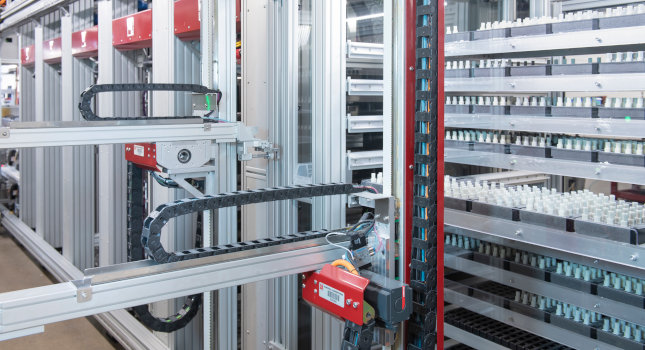Data should be available to all users at all times throughout the lifecycle

The world today is awash with information. But being unable to integrate and access the many mutually incompatible forms of information seriously impairs its value. This is especially true in the plant industry, where different applications are used to create different types of information—schematic diagrams, 3D CAD models, tabular data, maintenance manuals, and so on.
This can be enough of a challenge for an engineering, procurement, and construction (EPC) contractor, but it becomes worse for the owner-operator. EPCs can afford to maintain specialist engineering and design applications and the skills to use them because that, after all, is their stock in trade. A plant operator, in contrast, does not need the costly overheads of licensing multiple software systems and training staff in their use just for the occasions when they need a particular piece of information.
Even doing so would not enable the different types of information to be cross-referenced. It is common for owner-operators to mandate digital handover of information from their contractors, but if they then cannot effectively use the information, how do they benefit? How can we overcome this problem?
The solution now exists in the form of powerful information management technology. This is being adopted with great success by many leading operators, most notably in the oil and gas industry where any inefficiency is particularly costly. Importantly, the same technology can also support the project-oriented business processes of the EPC, so a common infrastructure can enable seamless and progressive information handover as a project progresses. Gone are the bad old days of the “here’s the keys; off you go!” style of handover.
At AVEVA, we visualize this common infrastructure as a Digital Information Hub. This is not a single proprietary application but is a concept configured from a number of standard applications and modules to create an open, enterprise-wide information management system.
Building the application
The principal building blocks of such a system are:
- A highly flexible data model built with industry standards such as ISO 15926 in mind, to enable the capture of information in almost any format from any source.
- A centralized and centrally accessible repository of validated and cross-referenced information of all types
- Interfaces (which we call gateways) that enable a wide variety of source applications and business systems to publish information to the repository
- A “gatekeeper” application which validates incoming information against defined standards. These may be industry or company-specific standards, and the gatekeeper will intelligently accept, reject, or quarantine information according to its level of compliance.
- A web-based visualization application which enables a user to navigate intuitively through the entire information asset and configure task-related views and reports.
There are many substantial benefits to be gained from an enterprise-wide information management system throughout the entire asset lifecycle, and the Web-based interface approach also removes the need for heavy investment in user training and IT architecture to house the solution.
Project handover
Looking first at the project handover process, a typical case would be one in which the owner-operator has deployed this type of information management system but the EPC has not. The handover pack may be a purely digital collection of various types of engineering and design data, which the gateway interfaces can easily handle. The import process is substantially automatic, with the software validating the compliance of each data item and cross-referencing it to all its associated data. User intervention will normally only be required to resolve missing, noncompliant, or inconsistent data.
In many cases, a small proportion of the information may still be in printed format. This also is easily handled by interfaces that “scrape” scanned documents to extract their information.
Even greater benefits are achievable when both EPC and owner-operators use the same system. In this situation, information handover can cease to be a discrete milestone event but instead be a progressive, collaborative process. As validated information is published to the Digital Information Hub during project execution, it can be used by the owner-operator’s operations specialists to prepare their own processes and procedures—such as maintenance and spares management—well in advance of commissioning. Not only does this save valuable time and enable quicker ramp-up to full plant output, it also encourages closer collaboration between designers and operators to make the new plant design as operations-friendly as possible.
This level of integration can almost abolish the concept of handover as we currently understand it. Information no longer has to be passed from here to there; it is available from the outset to support every stage and process in the asset lifecycle, from FEED to final end of life. Of course, it requires a change in the nature of the relationship between owner-operator and EPC from the traditional buyer/seller to a more collaborative one. EPCs may understandably be hesitant about allowing their clients apparently unfettered access to their trade secrets, but there have been very successful precedents that have benefitted both parties.
Asset operations
Looking now at the operations phase, no aspect of asset ownership can fail to be improved by ready access to validated information. Among the more important examples are:
- Handover: Progressive turnover of engineering information from major/sustaining capital projects to operations.
- Master data preparation: Enable the generation of master data controlled records for your enterprise asset management system.
- Improved compliance reporting: It becomes easy to aggregate essential information into configured reports for on-demand or scheduled audit of regulatory compliance.
- Improved shift handover: Shift changes are widely recognized as a leading contributor to unplanned downtime, reduced plant performance, and serious incidents. Digital shift handover packs become easy to configure, combining a variety of static, log, and real-time information in a convenient and easy-to-use form.
- Risk-based inspection: Combining intelligent and navigable 3D model views with process and other data greatly facilitates risk identification and the deployment of effective inspection and maintenance strategies.
- Incident response: In an emergency, effective action demands immediate, on-the-spot access to relevant, trustworthy information. This is only achievable with Digital Information Hub technology.
Experience has shown that, where such a system is deployed for well-defined engineering purposes, users quickly find new and unexpected ways to exploit it, often in other areas of the enterprise. The full potential is limited only by one’s imagination!
The brownfield challenge
Greenfield projects are a minority compared to the number of existing plants in need of continual upgrade and modification. There are some powerful new technologies which serve this important market, based on the use of 3D laser surveying. Perhaps less well-known is how laser scan data can be used to add intelligence back into an as-built digital plant which may have very poor quality information assets.
First, one should not assume that the Digital Information Hub concept cannot be applied to existing assets. It can; and I would strongly argue that it should be, as regulatory authorities are progressively tightening environmental and safety requirements on plants of any age. An information management system is likely to become mandatory in order to meet future compliance criteria.
The value of 3D visualization in supporting plant operations is rapidly being recognized. Laser scans are the preferred means of capturing an accurate 3D as-built model, and these too can be integrated with other data within a Digital Information Hub. But it is now possible to assign tag reference hot-spots to individual objects in the scan, such as pipes or valves, enabling a user to “walk” through the laser model, “touch” an object, and navigate immediately to all its associated information. The potential this offers is easy to visualize.
Capturing a complete information asset from fragmentary data from obsolete IT systems; poorly updated, damaged, or missing drawings; and so on may seem impossible, but a Digital Information Hub approach at least makes the challenge manageable. Automatic validation and cross-referencing functions show exactly where, and how significant, the information gaps are, enabling informed and prioritized resolution. A 3D laser scan can even be reverse-engineered into an intelligent CAD model.
This capability meshes well with the widespread use of laser scanning by plant modification contractors, bringing us back to the greenfield project handover situation. Not only can the EPC execute accurate, right-first-time and well-planned modifications, the digital information created can be readily imported into the owner-operator’s Digital Information Hub. It is easy to see how, over time, successive plant modification projects can contribute to the creation of a complete Digital Plant information asset. The business value is considerable.
AVEVA is a leader in engineering design and information management solutions for the plant, power, and marine industries. For further information please visit www.aveva.com/ednotes.



